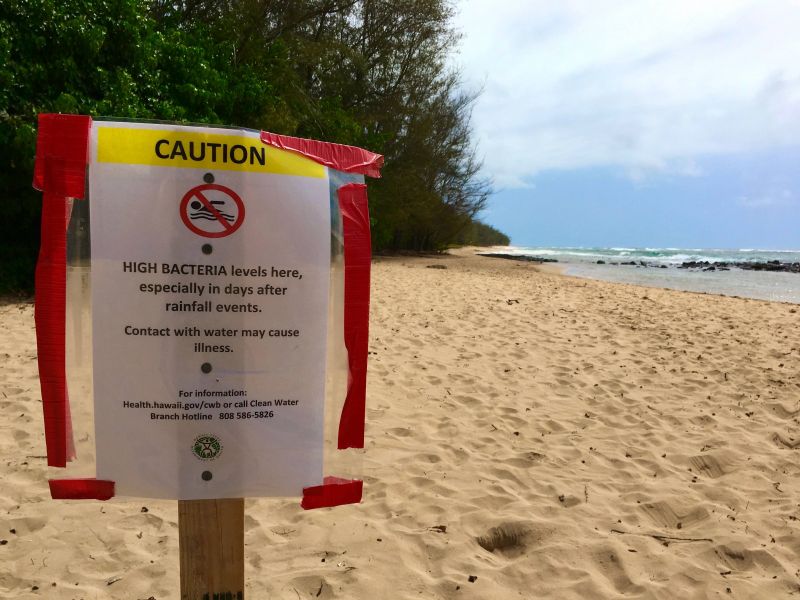Microbial Detection Device Provides Clarity Amid Water Contamination Concerns in Hawaii
Published on by Water Network Research, Official research team of The Water Network in Technology
Scientists use a powerful microbial detection device to show that suggestions of sewage in Kauai’s watershed were mostly false positives.
By Aliyah Kovner, Berkley Lab News Center

At Gillin’s Beach in the Mahaulepu watershed, signs were frequently posted warning beachgoers not to swim. However, the team found no evidence of any contamination during an entire year of monitoring. (Credit: Eric Dubinsky/Berkeley Lab)
For years, routine testing of water quality has shown that watersheds of the Mahaulepu Valley and Waikomo Stream in southeast Kauai frequently contain high counts of potentially pathogenic fecal indicator bacteria (FIB). Though past investigations have concluded that the FIB are not being introduced into the water via sewage leaks or illegal sewage dumping, the Hawaii Department of Health (DOH ) remained concerned about the source. To better understand the cause of the high FIB counts, the DOH commissioned a study by Lawrence Berkeley National Laboratory (Berkeley Lab) microbial ecologists Gary Andersen and Eric Dubinsky.
The duo is frequently invited to lead microbial water assessment projects thanks to their expertise and unparalleled toolkit, which centers around a credit card-sized microbial detection technology called the PhyloChip. Invented by Andersen and others at Berkeley Lab in 2008, the PhyloChip has been used previously to monitor water in the San Francisco Bay Area, tropical waters around coral reefs, and throughout the city of Singapore.

PhyloChip enables scientists to study bacterial communities, their interactions, and how they change over time. This capability is important because deep, sudden changes in the structure of a bacterial community could represent dangers in the form of an airborne biological terrorist attack, an epidemic caused by contaminated water or soil, or hazardous atmospheric alterations caused by climate change. (Credit: Berkley Lab)
After analyzing samples from 13 inland and coastal sites taken over the course of one year, the scientists concluded that there was no detectable human sewage in the Mahaulepu watershed, nor was there a significant presence of livestock or avian wildlife fecal matter. Two stream sites within the watershed did show isolated incidences of pig and cow fecal contamination, yet the popular beach area downstream from these sites was clean.
“The PhyloChip is able to rapidly profile the entire microbial community present in the water samples and use this information to detect bacteria that are unique to specific animal or human sources,” said Dubinsky, who is also a project scientist in the University of California Berkeley’s Department of Environmental Science, Policy & Management. “Unlike conventional fecal contamination tests, which use a handful or even just a single species to identify the potential for contamination, our approach uses a diverse set of hundreds of different bacteria that are characteristic of each fecal source. At the same time, it can detect nearly 60,000 species of bacteria and archaea, meaning that we can find dangerous microbes present in a water source even if we don’t anticipate them.”
References:
- Eric Dubinsky and Gary Andersen, "Mahaulepu and Waikomo Watersheds PhyloChip Source Tracking Study, Hawaii - Final Report", May 22, University of California, Berkeley
- "Berkeley Lab’s PhyloChip Enables Tracking of Bacterial Dangers", Berekely Lab
Read the full article on Berkley Lab News Center
Media
Taxonomy
- Raw Sewage
- Technology
- Water Quality
- Test & Measurement
- Water Monitoring
- Sewage
- Infrastructure
- Sewer Networks
- Water Quality Research
- Testing Kit